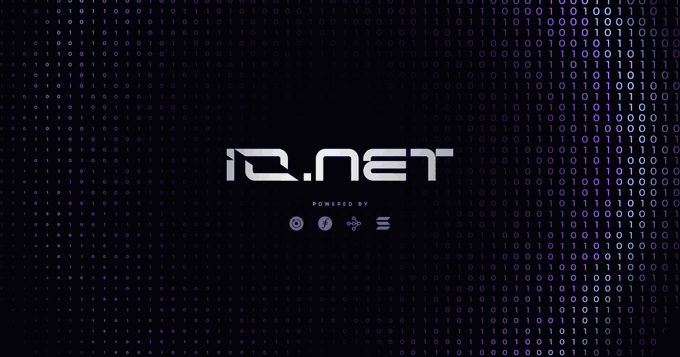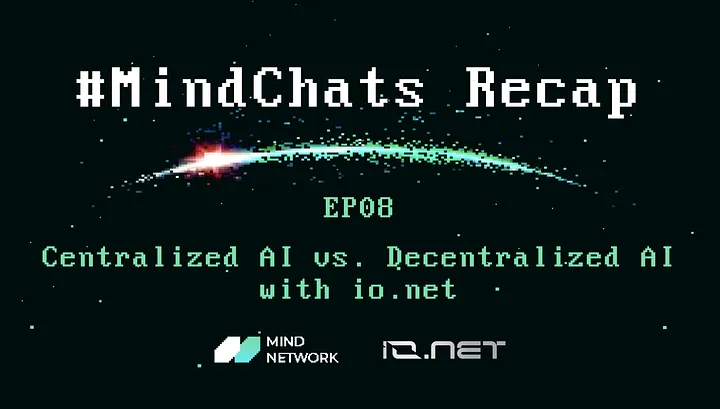The emerging decentralized protocol platform io.net recently announced the completion of a $30 million Series A financing, led by Hack VC and participated by top investment companies such as Multicoin Capital, 6th Man Ventures, and Delphi Digital. This financing not only demonstrates the market potential of io.net but also has attracted widespread attention in the industry.
In addition, since the launch of its "Ignition" program, the number of GPU miners on io.net has surged from 26,000 to 51,000 in just ten days. This rapid growth reflects the attractiveness of its technology and the promotion of practical applications.
Furthermore, io.net's founder and CEO Ahmad Shadid has stated that the IO token is expected to be launched on April 28, further expanding its influence in the cryptocurrency market.
With strengthened funding and technological foundation, io.net is rapidly becoming a focus in the field of blockchain technology. Subsequent content will further explore the technical details and market strategies of io.net.

Unveiling the Decentralized Computing Power Revolution of io.net and Predicting the Future Trend of AI Computing
Before discussing the business model of io.net, it is crucial to understand the application of decentralized computing power in AI computing. The demand for computing resources has sharply increased as AI technology has evolved from simple CPU-based models in the 1980s-2000s to complex deep learning and large models relying on GPUs and TPUs, especially when processing large datasets.
From Decision Trees to Giants: Evolution of Machine Learning Computing Demand
1980s-2000s: Machine learning relied on simple algorithms such as decision trees and SVM, and the computing demand could be met by personal computers.
After 2006: The rise of deep learning increased the reliance on GPUs, especially when processing large datasets.
2018 to present: Large models such as BERT and GPT further increased the demand for high-performance computing clusters.
io.net: Reshaping the Future of Computing, the New Era of Decentralized GPU Network
io.net has significantly reduced costs and improved computing efficiency by building a decentralized GPU computing network using globally distributed idle GPU resources.
- Cost efficiency:
Compared to traditional centralized computing centers, io.net's decentralized model reduces the need for large-scale hardware procurement and maintenance, significantly lowering initial investment and operational costs.
- Technological implementation:
Cluster computing: Utilizing Ray and Kubernetes technology, io.net has optimized resource management and task allocation, improving execution efficiency.
Privacy and security: Enhanced data transmission security and privacy protection through mesh VPN and data stream obfuscation technologies.
- Market positioning:
io.net's service costs are 90% lower than traditional cloud service providers and can be deployed within seconds, meeting the market's high demand for efficiency.
By providing elastic resource combinations and instant deployment, io.net has a significant competitive advantage in complex task processing requiring large computing resources in the AI and machine learning fields.
Through decentralized efficient computing resource aggregation, io.net not only optimizes costs and resource utilization but also enhances service security through innovative privacy protection technologies. These competitive advantages indicate io.net's important position and development potential in the global AI computing power supply market.
Revealing the Transformation of AI Computing Models: io.net's Breakthroughs and Advantages in Decentralized Computing Power
In the latest episode of MindChats podcast, Ahmad Shadid, the founder and CTO of io.net, delved into the fundamental differences between centralized and decentralized AI and their respective advantages. This discussion revealed the potential of decentralized AI in optimizing computing resource allocation, reducing costs, and improving system scalability and flexibility.
From Centralized to Decentralized: Data Storage Revolution in AI Systems
Centralized AI systems rely on large data centers for centralized data processing and storage. While this approach accelerates data processing and simplifies data management, it also has significant drawbacks:
High costs: Building and maintaining data centers require substantial capital.
Limited scalability: Expanding existing systems when demand grows is complex and expensive.
Security risks: Centralized data storage increases the risk of data breaches.
Unlocking the Future: Three Major Advantages of Decentralized AI
Decentralized AI overcomes many limitations of centralized systems by processing and storing data through a distributed network:
Cost efficiency: Reducing reliance on large physical facilities lowers maintenance costs.
Robust scalability: Easily expanding systems by adding more nodes without large upfront investments.
Data security: Distributed storage and encryption technologies reduce the risk of centralized attacks.
Decrypting io.net: How Decentralized Models Optimize AI Computing Demands
Shadid explained how io.net utilizes a decentralized model to optimize AI computing demands:
Resource aggregation: Integrating idle GPU resources globally to form a powerful distributed computing network.
Dynamic resource allocation: Adjusting resources dynamically according to demand to improve computing efficiency and reduce energy consumption.
Economic incentives: Introducing Web3 incentive mechanisms to encourage individuals and businesses to share computing resources, further reducing costs.
Privacy protection: Using advanced encryption and privacy technologies to ensure data security.
This discussion not only clarified the differences between centralized and decentralized AI but also demonstrated how io.net addresses the challenges of cost, scalability, and data security through its decentralized platform. io.net's practice shows that decentralized computing is not only feasible but also superior to traditional models in critical aspects, especially in improving cost efficiency and system flexibility.

io.net Drives Decentralized Computing Power Innovation, Sparking Interest in Its Market and Economic Model Prospects
In the ecosystem of io.net, the native cryptocurrency IO coin and its protocol token are crucial. They not only simplify payment processes for AI startups and developers but also ensure that computing providers, especially GPU resource providers, receive fair economic returns. The introduction of IO coin makes deployment and computing costs more transparent while incentivizing participants to continuously contribute their idle computing resources.
io.net places special emphasis on the construction of its economic model to ensure that transactions within the ecosystem are not only fair but also efficient. The network settles fees using IOSD Credits pegged to the US dollar, and every model deployment and computing task is paid for through IO coin in small transactions. For GPU suppliers, whether renting out GPUs directly or participating in network model inferences, IO coin ensures that they receive their due returns.
Additionally, io.net plans to introduce a fully decentralized pricing scheme, which will price miner hardware through a publicly transparent benchmarking tool, similar to speedtest.net, to ensure a fair and transparent market environment. This pricing mechanism will consider various factors, including hardware performance, internet bandwidth, and regional differences, to adapt to market demand and resource availability.
Although io.net has established a vast GPU network on the supply side, far exceeding other competitors such as Akash Network, the growth on the demand side is still in its early stages, with low chip task loads. However, with the nurturing of the market and continuous optimization of product experience, demand is expected to gradually increase.
Overall, through its innovative decentralized computing power platform and economic incentive mechanism, io.net provides strong support for AI startups and engineers, driving the development and application of technology. Looking ahead, with the maturation of technology and the increase in market activities, io.net is expected to play a more important role in the global AI computing power supply market.
免责声明:本文章仅代表作者个人观点,不代表本平台的立场和观点。本文章仅供信息分享,不构成对任何人的任何投资建议。用户与作者之间的任何争议,与本平台无关。如网页中刊载的文章或图片涉及侵权,请提供相关的权利证明和身份证明发送邮件到support@aicoin.com,本平台相关工作人员将会进行核查。




